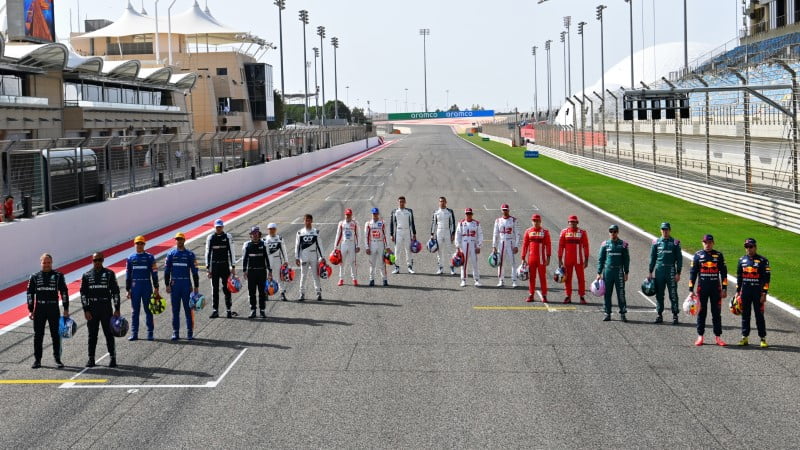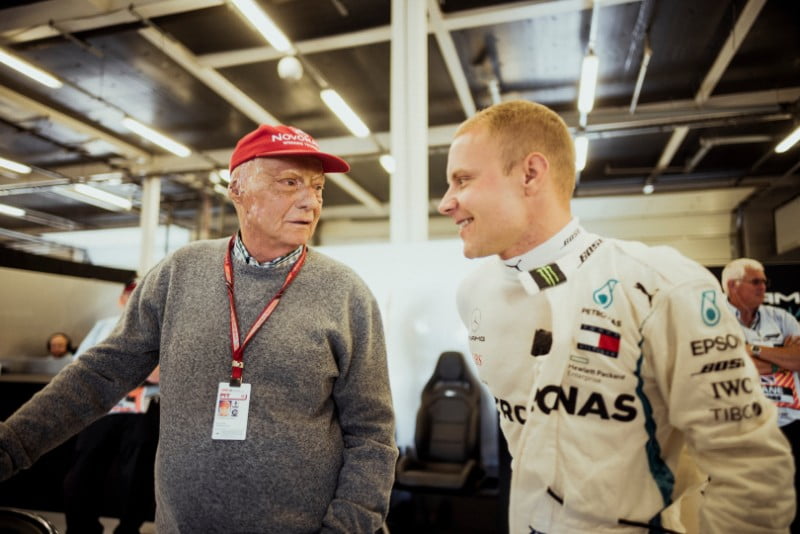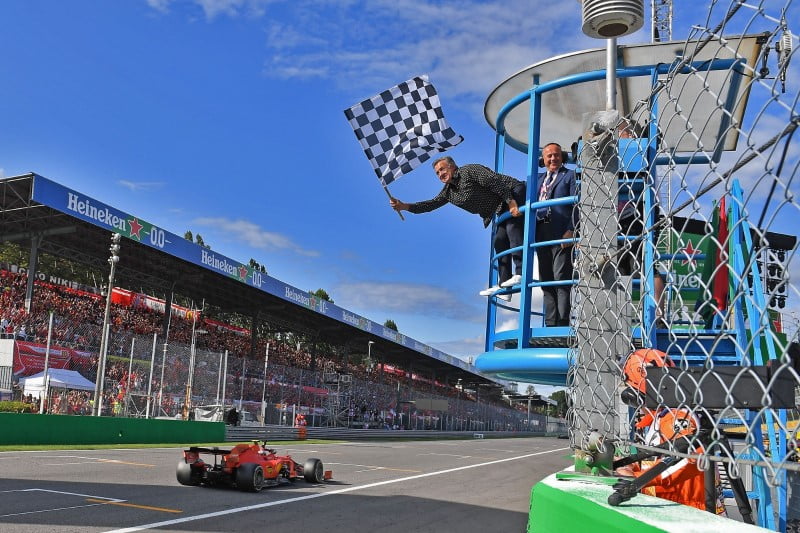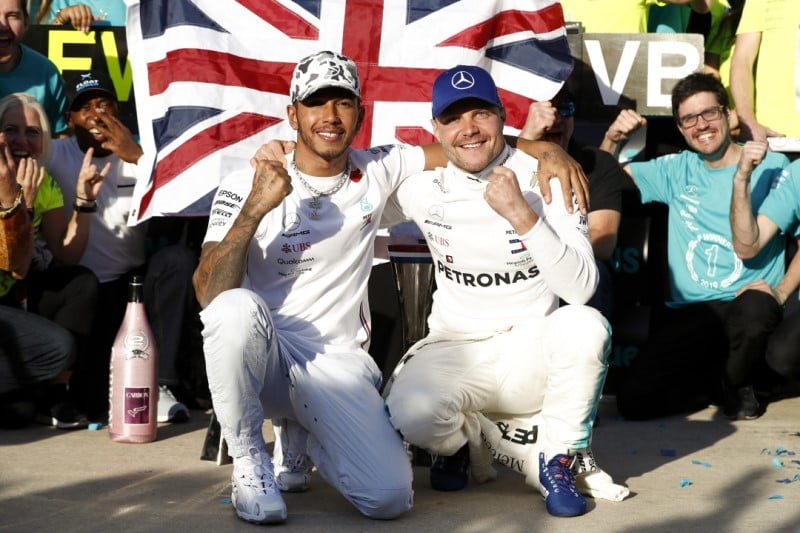From the 2021 season, newly introduced financial regulations dictate that Formula 1 teams will be permitted to spend up to $145 million only. But there’s more – here’s a full list of what’s new in F1 2021.
The 2021 season was when Formula 1 had planned to unleash its most-revolutionary rules changes in history, but the COVID-19 pandemic has forced the organisers to carry forward the cars from 2020 to the upcoming season for economic reasons.
Earlier in the year, Liberty Media reported that its payments to Formula 1 teams in 2020 were almost $300 million lesser than in 2019. This was due to the unique nature of the season last year (TV-only races, fewer races, etc.).
However, 2021 season will be a lot more than just being a version 2.0 of the 2020 season! Here is a list of ‘what’s new’ for the upcoming season and how it could impact your experience of the sport altogether.
Who’s up for a bit of racing next Sunday?! ?#F1 pic.twitter.com/9PBx1wvnqF
— Formula 1 (@F1) March 21, 2021
Longest Formula 1 calendar + new races
The official calendar for the 2021 Formula 1 season has 23 races listed — the longest-ever in the history of the sport. In 2020, the FIA and Formula 1 showcased how the sport could run despite the COVID-19 scare. However, they did so by hosting most races in Europe and a couple in the Middle East.
In 2021, Formula 1 aims to run its regular calendar (basically, hosting races across continents) and it will be interesting how they manage to do so despite the ongoing pandemic. And of course, there are two new races added to this season’s calendar — Zandvoort in the Netherlands and Jeddah in Saudi Arabia.
New formats
Formula 1 isn’t focussing on the quantity of racing alone. They have been discussing several changes to the regular format to increase the on-track action. Thankfully, the idea of ‘reverse grids’ has died down, but do expect the ‘sprint race’ idea to be tested in 2021 albeit with a different name. The rumour suggests that a sprint race will be tested across three races of the season. This would mean that qualifying would shift to Friday, followed by a sprint race on Saturday which will be further followed by the main race on Sunday. The regulations around such a change should be announced soon.
However, the one confirmed change for the 2021 season will be that each free practice session (on Friday specifically) will be limited to only 60 minutes of running. Such a change is expected to reduce no-action time on Fridays.
Aero changes
Formula 1 has introduced aerodynamic changes to the cars for 2021 with the aim to reduce overall downforce levels by 10 per cent. There have been changes introduced to the floor of the car, the rear brake duct winglets and the diffuser. The primary aim of this reduction in downforce was to permit Pirelli to use the same tyres from the previous seasons (albeit with some changes for 2021), however, the collective brainpower of Formula 1 is expected to crawl back much of this lost downforce through the season.
If pre-season testing is anything to go by (but it usually isn’t), the aero changes might just give us a more bunched-up grid — with Red Bull Racing looking ahead of Mercedes, the mid-field seemingly closer than last season and Williams being quicker than Haas.
Jeddah Street Circuit will rank among the fastest F1 circuits on the calendar when it plays host to round 22 in December ?#F1 #SaudiArabianGP pic.twitter.com/QYHerC96Wv
— Formula 1 (@F1) March 18, 2021
Sliding scale aero regulations
Formula 1’s version of a ‘handicap’ is what the sliding scale aero regulations are all about. Introduced from this season, this rule permits the teams placed lower in the Constructors’ Championship more time to develop their car through the season using their wind tunnel or CFD (computational fluid dynamics) simulations. Conversely, teams finishing higher are given lesser time to hone their package. The sliding scale aero regulations would only get more pronounced in the seasons to come.
For example, from 2022, a team finishing 10th could get up to 35 per cent more time to develop their car than the team finishing first. The last time Formula 1 introduced a handicap rule of sorts was back in the mid-2000s. The Renault team used their handicap to a good advantage to stop the dominant Ferrari-Schumacher era.
IF F1 Teams Were A Stock In 2021: Buy, Sell Or Hold?
Budget cap
After almost a decade since it was first planned, a budget cap has become a reality in Formula 1 from 2021. From this season, newly introduced financial regulations dictate that teams will be permitted to spend up to $145 million — a number that can be higher or lower depending on the number of races and has several exclusions attached to it. Either way, the introduction of a budget cap is a step in the right direction — aiming to level the playing field and avoiding an expensive arms race between the well-funded teams. The budget cap will also work on a sliding scale from this season till 2023.
Teams are known to aggressively develop the aero performance of their car through the season. In 2021, they will be permitted to do so as long as they are within their allocated budget.
Token system
Also being introduced from 2021 is a ‘token system’ — one that permits teams to change certain areas of their package from 2020 to 2021. This includes the chassis, suspension and crash structures. The FIA has detailed which parts require tokens to change and how many tokens it would cost the team (only two tokens available per team for 2021). It is already known that Mclaren have used their tokens to adapt their car to fit the Mercedes power unit from this season while Ferrari have used tokens to revamp the rear of their car. Similarly, customer teams like Aston Martin can upgrade to Mercedes’ 2020 parts without spending any of their tokens.
In all, one expects that the mix of aero rules, budget cap and the token system will play a role in the revised grid order, if we end up having one this season.
Since we last raced in Bahrain there have been one or two changes! ?#F1 pic.twitter.com/44Gku21rg4
— Formula 1 (@F1) March 21, 2021
New power units
Power unit development lies outside of the budget cap — and this is one area that teams are aggressively pushing forward with. Ferrari and Honda are bringing in new power units this season, Mercedes have brought new innovations to theirs while Alpine have decided to stick to the ones they used last season with minimal upgrades. In all, one should expect the pecking order between the power unit manufacturers to change this season, also impacting the form of the cars they eventually power. Finally, there’s a power unit development freeze that comes into effect from 2022, so expect teams to max out their programs through 2021.
And of course, power units will weigh 5kg more in 2021. The overall weight of the cars will be 8kgs more from last year — the balance 3kgs being added to the car. This rule change is to dissuade teams from spending their budget on expensive, weight-saving materials.
What Mick Schumacher Needs To Target For F1 2021
New Pirelli tyres
The only thing new about the Pirelli tyres for 2021 will actually be their construction — one that Pirelli claims has been changed to make the tyres more robust. This change was brought about after the tyre failures experienced last year due to an increase in cornering loads. In fact, Pirelli’s compounds are as-good-as unchanged from the ones used in 2019.
The one change that will be brought into effect from 2021 will be the automatic tyre allocation for all drivers. Previously, the drivers had an open allocation of soft, medium and hard tyres to choose from as long as the selection totalled to 13 sets per driver. From 2021, each driver will receive eight sets of soft, three sets of medium and two sets of hard tyres. This standard allocation should impact tyre strategy and usage throughout the weekend.
No copy cats allowed
Last season, Racing Point’s ‘Pink Mercedes’ approach was criticised heavily and saw the FIA penalising the team (financial + points penalty). For 2021, the FIA has expanded rules to ensure that blatant copying of a rivals’ car isn’t permitted via direct exchange of parts. The teams are still permitted to ‘copy’ designs using photography, videos and so on, but they aren’t permitted to ‘reverse engineer’ a competitor’s car.
Such a move is welcome, especially since it preserves Formula 1’s DNA to having independent constructors race each other.
New driver-team partnerships
The best change for 2021 will be the new driver-team partnerships at play. Only three out of the 10 teams (Mercedes, Williams and Alfa Romeo) have retained their driver line-ups for 2021, meaning that new driver rivalries will emerge through the season. Aston Martin returns to Formula 1 while Renault has been rebranded as Alpine. Also, one expects the driver silly season to throw up a few surprises, too. Will George Russell get his permanent promotion to Mercedes? Will Alexander Albon return to Red Bull Racing or will Sergio Perez continue? Will Lewis Hamilton and Kimi Raikkonen continue or retire from Formula 1?
Finally, almost every team has either tweaked or changed their livery for 2021. The unique visual identities should make it easier for fans to recognise their favourite team-drivers when actions begin with this weekend’s 2021 Bahrain Grand Prix (26-28 March).
This post was first published on Firstpost.














